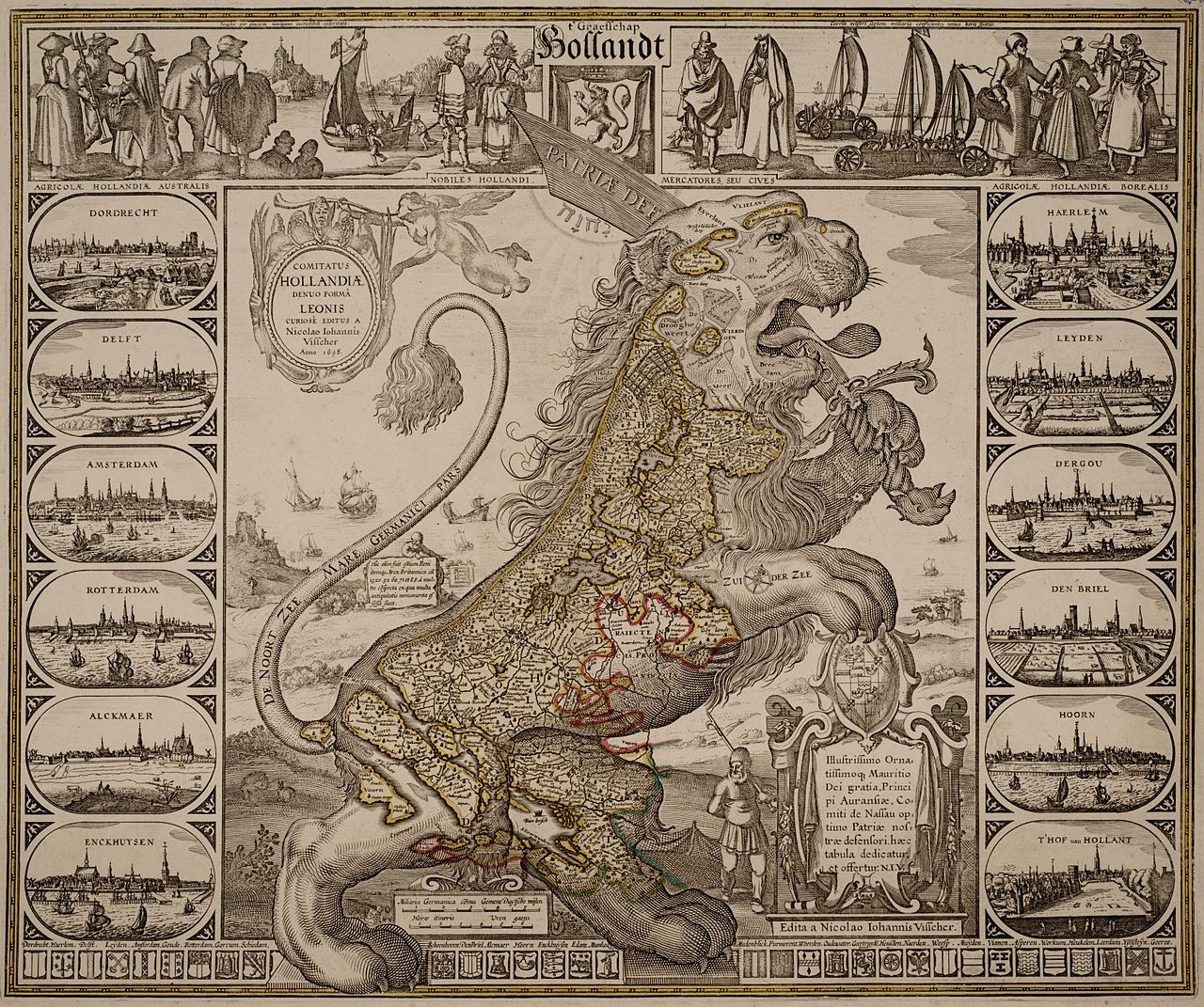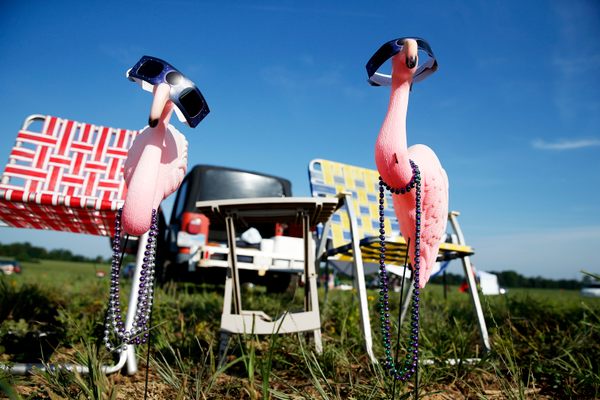The Lion-Shaped Maps That United a Nation
Back in the 16th century, the “Leo Belgicus” helped the Netherlands win a long war for independence.

Sports teams and political movements alike know: if you want a disparate group to come together, it helps to pick a good mascot. Nearly half a millennium ago, the nation that would one day become the Netherlands went all in on a powerful uniting animal: a geographic lion called the Leo Belgicus.
Halfway through the 16th century, the northern coast of Western Europe—the land we now know as the Netherlands, Belgium, and Luxembourg—was in the midst of an identity crisis. The people living there were ready to get out from under the thumb of their ruler, Philip II of Spain, who collected heavy taxes without providing much of anything in return.
But the area went by a number of different names, most of which (“the Low Countries;” “the Seventeen Provinces”) brought to mind vagueness and division, rather than any common purpose. The crown’s overlords, who didn’t mince words, usually just called the area “De landen van herwaarts over”—“those lands around there.”

In the 1560s, “those lands” began rebelling. In 1581, they renamed themselves the Republic of the Seven United Netherlands. But this was still not quite enough. So in 1583, the cartographer Michaël Eytzinger, sensing the need for an even clearer national identity, took it upon himself to draw a unified map of this place that had just declared itself.

Inspired by the many local coats of arms that featured the creature, he imagined the land in the form of a lion: the city of Groningen on its nose, Luxembourg in its front paw, and the northwest coast all down its back.
As the war waged on, Eytzinger’s design—which he called “Leo Belgicus,” or “Netherlandic Lion”—grew in popularity. “The image was soon taken up by other artists who composed an intriguing set of variations,” writes the literary historian Ton Hoenselaars in Borders and Territories.
Many of these variations saw the Leo Belgicus evolving along with the political situation. To mark the Twelve Year’s Truce, which began in 1609, the Dutch mapmaker Claes Janszoon Visscher drew a version in which the lion sits peacefully, its sword facing downwards. Two years later, an even less bellicose lion came out, drawn by Jocodus Hondius. This one shows the lion standing on all fours, its tail wrapped around its back legs, wielding no sword at all.

After the truce ended, Visscher’s son, Nicolao Iohannis, came out with a brand new version, the Leo Hollandicus, which contains only the province of Holland—at the time the most politically powerful area of the Republic. This time, the lion rears up completely, a sword in its paw, its territories contained safely in its torso and back legs.
In all cases, though, it was a lion through and through, sometimes at the expense of the land’s actual shape. “The Leo Belgicus that emerges demonstrably represents not the nation, but an image of the nation,” Hoenselaars writes. It was more important to be leonine than accurate.

This set of priorities worked just fine. In 1648, the Low Countries—which by this point was known as the Dutch Republic—won the war, and achieved independence. The lion had proven “an important element in building a common sense of national belonging, [and] in the birth… of a Dutch identity,” writes the historian Alessandro Ricci.
In the centuries since, other rhetorically minded mapmakers have borrowed this trick, portraying their own countries as, say, pigs or eagles (or their enemies as octopuses) in order to prove a point. The most famous example may be Benjamin Franklin’s “Join or Die”—a snake-themed political cartoon about the Thirteen Colonies that, according to some experts, also doubles as a map.
Many of these symbols have lost favor over time, but the Netherlands has held fast to their Leo. Today, nearly half a millennium later, there are not one, not two, but three lions clawing the air on the country’s coat of arms: a fitting tribute to an animal that once stood in for the whole nation.


















Follow us on Twitter to get the latest on the world's hidden wonders.
Like us on Facebook to get the latest on the world's hidden wonders.
Follow us on Twitter Like us on Facebook